This enormous 274m long stone structure appears in the landscape as if from nowhere. Cars are now held back from its proximity, so you walk –along with many others – and suddenly there it is: the Pont du Gard, the tallest and best preserved of all Roman aqueducts.
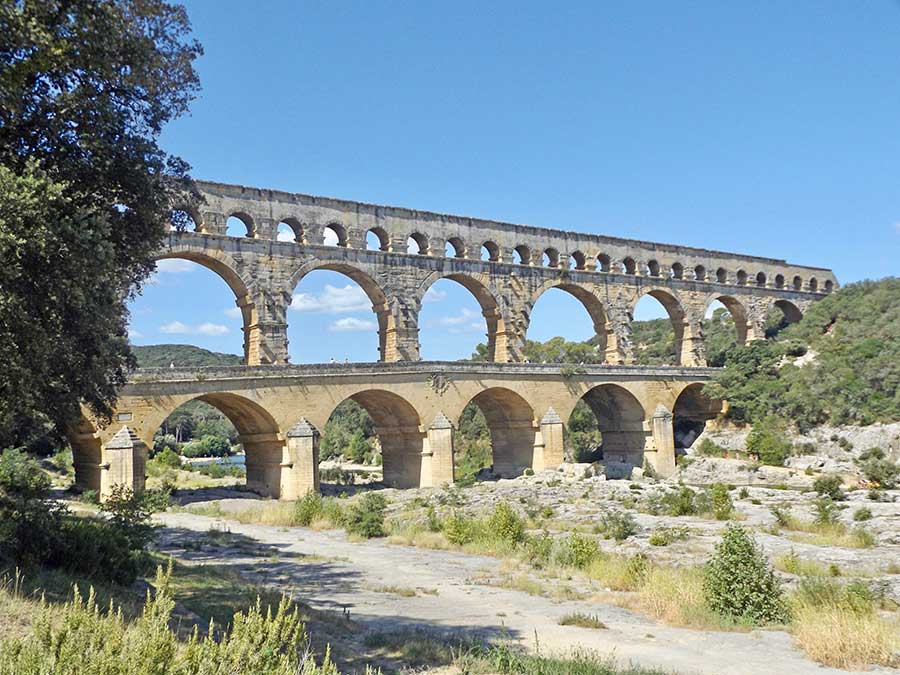
Built in the 1st century AD to carry water 50 kilometres to Nîmes from springs at nearby Uzès, it was designed to have an average fall of 7mm per 100 metres, and it worked! The top level was a stone-lidded conduit, smooth inside, which required much maintenance to keep clear of carbonates and vegetation over the six centuries of its use.
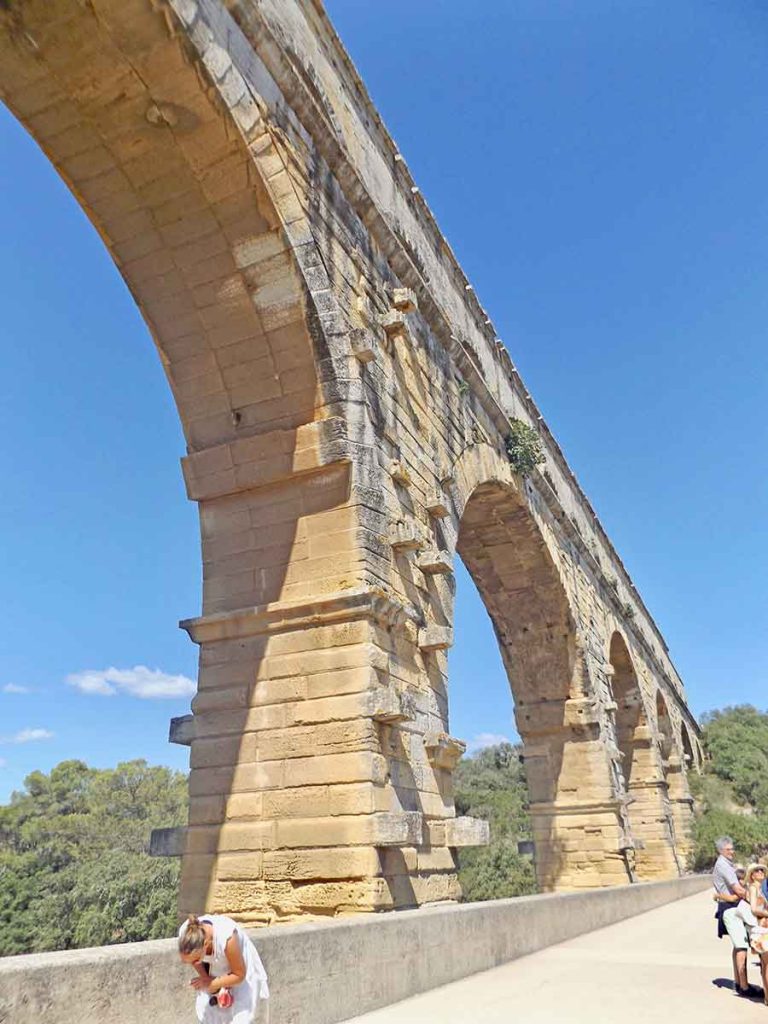
The actual 49-metre high structure is of rough limestone, no mortar. You can see the large projecting stones that supported the scaffolding as it was built. The lower level’s road bridge was added much later; water was the reason for this mighty undertaking.
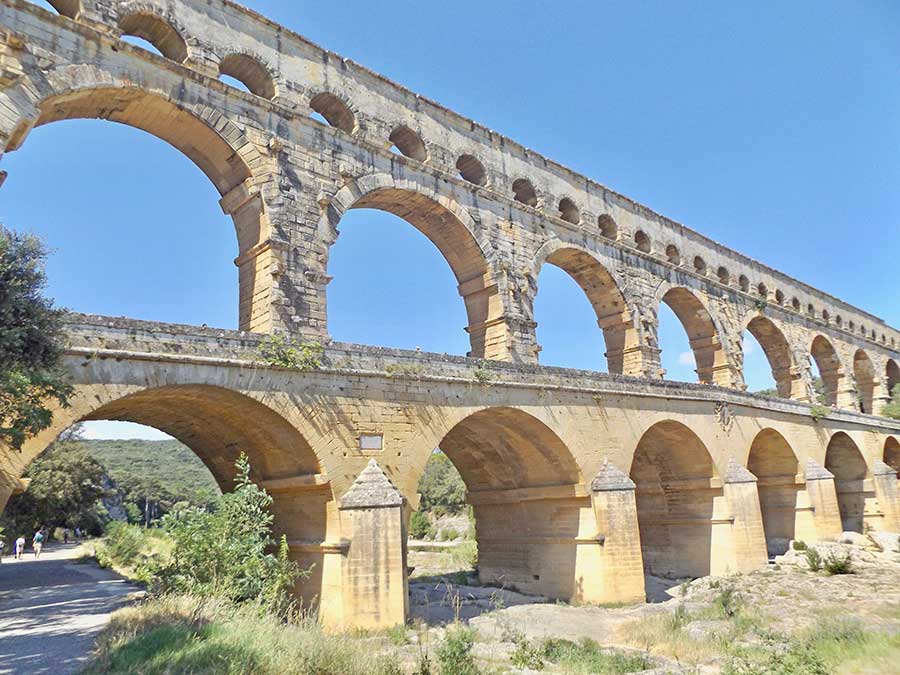
I had mistakenly thought it was built to bridge the River Gardon, but no, getting water to Nîmes was its main purpose. The six arches of the lower level are six metres thick to cope with that river’s flood. The history of the Pont is chequered, but Napoleon figures large in taking on its restoration.
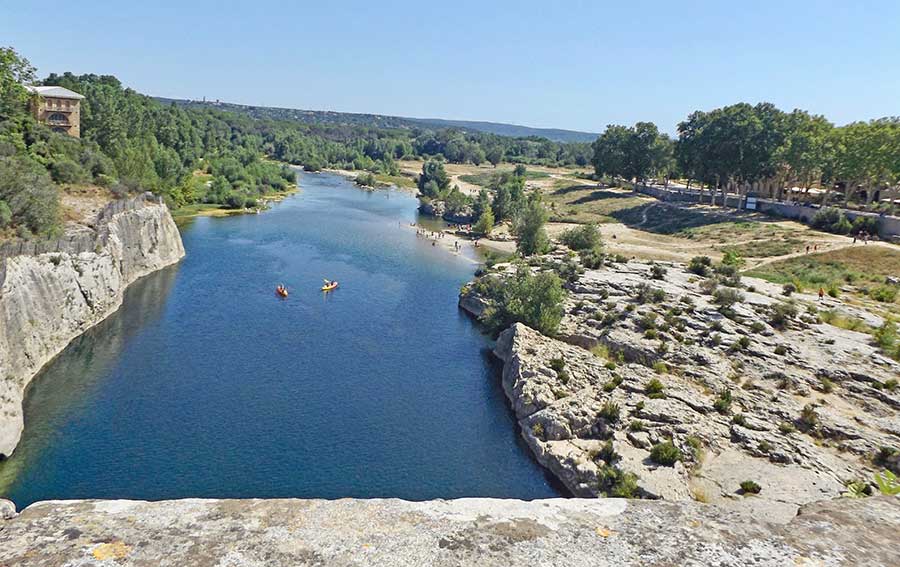
The river is treated as a swimming and boating place by many and as cars can access each side of the river, people can walk to its sandy beaches.
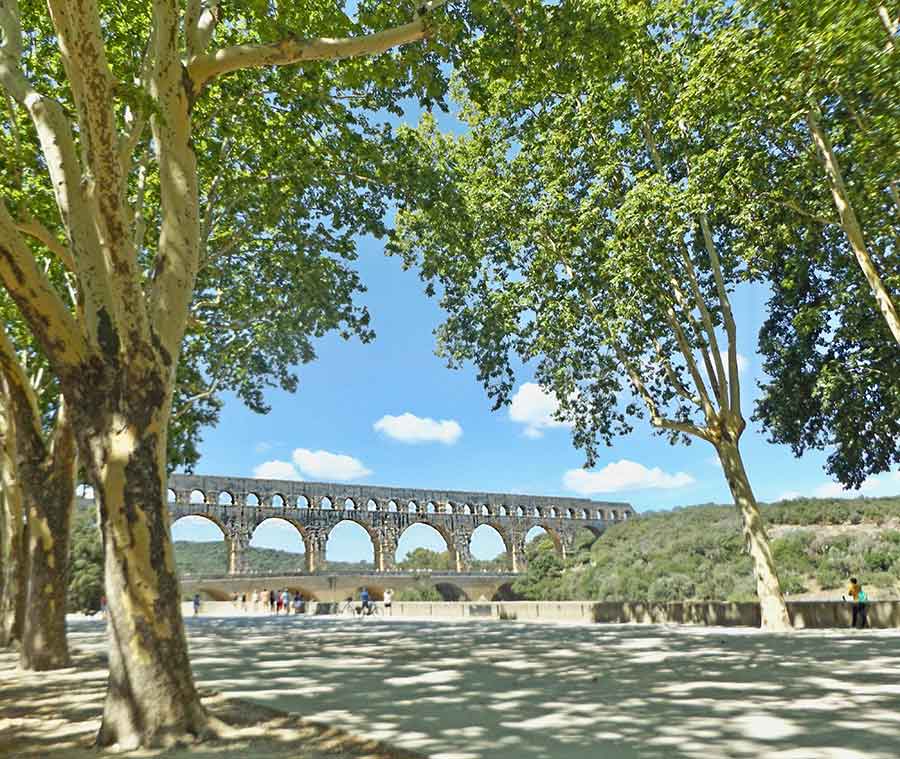
On the far side is a large park and promenade, with cafés and seating and playground, and walking access to the beaches. It seemed a very popular place for families.
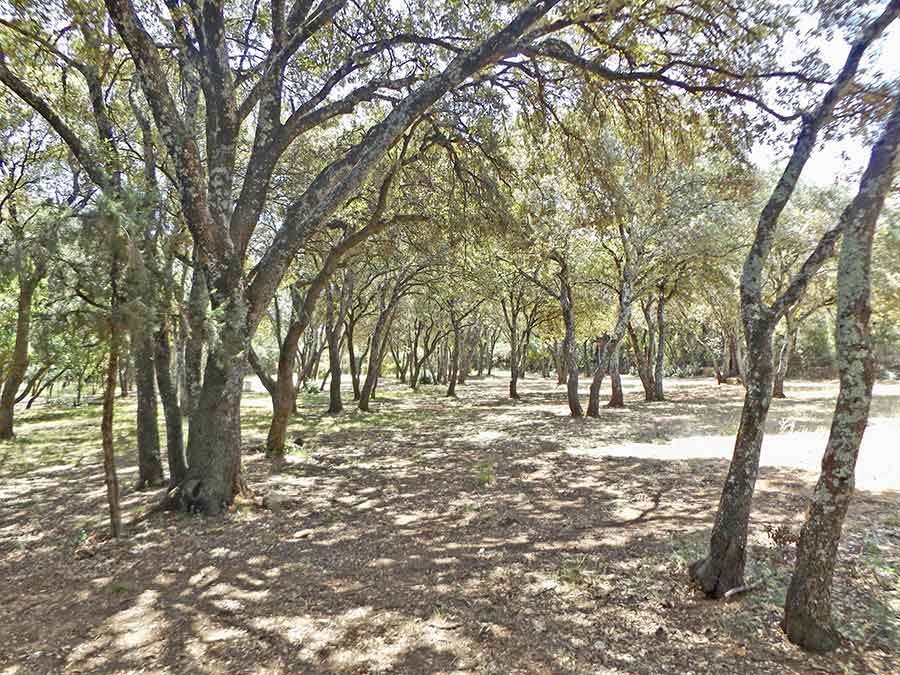
Back on the main tourist access side, I briefly visited the Memories of the Garrigue park, where the original ‘garrigue’ vegetation and the typical early land use, of grain and vines, as well as making charcoal, was commemorated.
Garrigue vegetation is Mediterranean, likened to our mallee, as its trees are low growing. It can have dense thickets of kermes oak, stunted holly and holm oaks, with lavender, sage, rosemary, wild thyme and artemisia common.
It reminded me of Bimblebox, although many trees there are taller, in its dry grey-green nature, compared to the lush chestnut, oak, lime and plane tree forests I had become used to in Italy.
Many famous people visited this Roman marvel, and many have written of it in awe. UNESCO considers it a ‘testimony to human creative genius’… as do I. The architectural and engineering skills that devised it are astonishing; once more I am struck that such a civilisation was wiped out, and really by greed, for conquering more and more. Greed remains; will we?
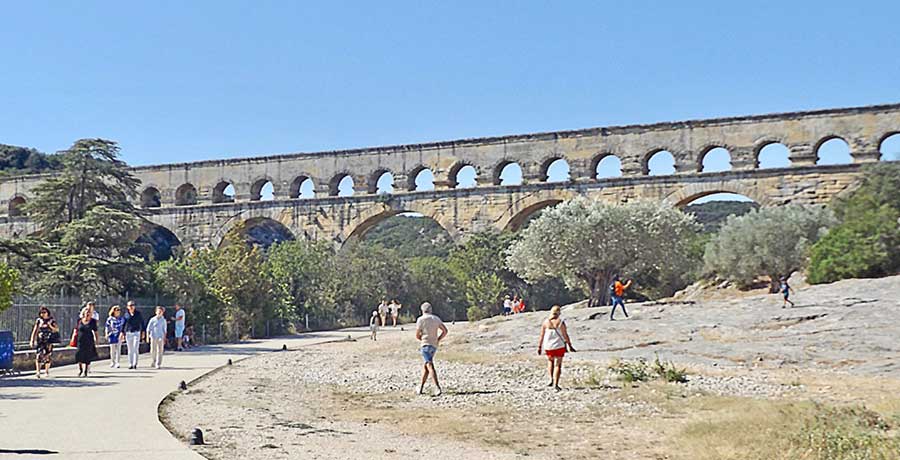
If only we could build like they did! Always breathtsaking!!Sue x
So glad you have enoyed them, Ariel!
Thanks and merci beaucoup and grazie tante for all your interesting pixx and comments.